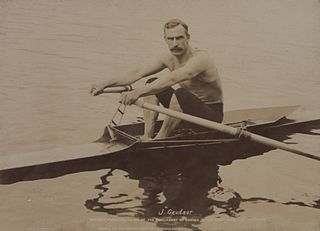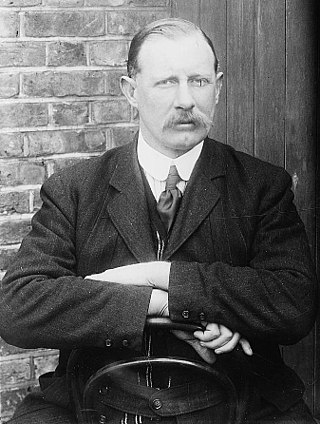Related Research Articles

Edward "Ned" Trickett was an Australian rower. He was the first Australian to be recognised as a world champion in any sport, after winning the World Sculling Championship in 1876, a title he held until 1880, when he was beaten by Canadian Ned Hanlan.
Harry Kelley (1832–1914) was a professional oarsman on the Thames. He became the Tyne, Thames, English and World Sculling Champion, a title he won four times.

Richard Arnst or Dick Arnst, born Jacob Diedrich Arnst, was a New Zealand rower and cyclist. He won the Single Sculls World Championship six times during the early part of the 20th century.

Robert Chambers was a Tyneside professional oarsman. He became the Tyne, Thames, English and World Sculling Champion.

The World Sculling Championship (1863–1957), evolved from the Championship of the Thames for professional scullers.

Ernest James Barry was a British rower and Thames Waterman, five times Sculling World Champion during the early part of the 20th century and winner of the Doggett's Coat and Badge Race in 1903.

William Beach was a professional Australian sculler. He was unbeaten as World Sculling Champion from 1884 to 1887.
Robert Coombes, celebrated professional oarsman and Champion Sculler, was born at Vauxhall, Surrey.
Joseph Henry Sadler was a British professional rower who twice won the World Sculling Championship. Before 1876, the English Sculling Championship was considered to be the premier event in professional sculling. In 1876, the English Title gained the World status and earlier winners were retrospectively given the title of World Champion.

Jacob Gill Gaudaur, Sr. was one of two Canadians to win the Professional World Sculling Championship. Gaudaur was born in Orillia, Ontario. His first race was when he was aged 17 years and over his career he raced more than two hundred times. His professional career started in 1880.
Wallace Ross was a professional rower who was considered to be the greatest sculler to come out of Saint John, Canada. He was a champion who nearly won the World Champion single sculls title.
Charles Campbell of Westminster was the first recognised professional world champion single sculler. At the time (1831), he became the Champion of the Thames which was effectively the Champion of England although the Tyne scullers might have disagreed. After the English title gained the world status in 1876, earlier winners were retrospectively given the World Champion Title.

James Arthur Messenger was a British sculler who was the world champion from 1854 to 1857. He served as the Queen's Bargemaster from 1862 to 1901. He resided in Teddington. In 1854 he became the Champion of the Thames which was effectively the English Sculling Championship and the World Sculling Championship. The English title gained the world status in 1876, earlier winners were retrospectively given the world champion title. In 1862 he won the famed Doggett's Coat and Badge, which claims to be the oldest sporting championship in the world. There is some confusion as to whether James Messenger who won the World Sculling Championship in 1854 is the same person, recorded as John Messenger of Cherry Garden Stairs, who won the Doggett's Coat and Badge in 1862.
George Towns was the Australian Single Sculls World Champion from 1901 to 1905 and 1906 to 1907. He was the last of the seven Australian World Sculling Champion who between them held the title almost uninterrupted from 1876 to 1909.

Thomas Sullivan was a New Zealand amateur rowing and sculling champion who later turned professional and challenged for the World Sculling Championship title. He later became a rowing coach.

Charles Amos Messenger was an Australian sculler and rower.
Charles R. Harding was an English professional single sculler who became the Champion of England and was a contender for the World Sculling Championship. He was born in London in 1867 and his occupation was that of a waterman. Like many of the professional English scullers, he had won the Doggett's Coat and Badge, but at 5 ft 5 ½ in and 9 st 5 lb he was not regarded as one of the heavy men. He made a name for himself in 1883, when he, at 16 years old, won the Chelsea Coat and Badge, and a year later, the Putney Coat and Badge. He was reported in the mid-1890s that “he pulls a beautiful even stroke, gets well over his sculls, while his leg-work is greatly admired.”
Major L. Goodsell was an Australian who five times won the professional World Sculling Championship.
Alfred D Felton (1889-1951) was the first Australian after World War I to win the professional World Sculling Championship. Before the war seven other Australians had held the title.
Neil Matterson was an Australian professional sculler who attempted to win the World Sculling Championship, and although he was unsuccessful in that, he went on to coach Henry Ernest Searle who did become the World Champion.
References
- “The Aquatic Oracle or Record of Rowing from 1835 to 1851” published 1852.
- The New York Clipper 13 June 1857.
- Professional World Rowing History http://www.rowinghistory-aus.info/world-pro-sculling/index.php